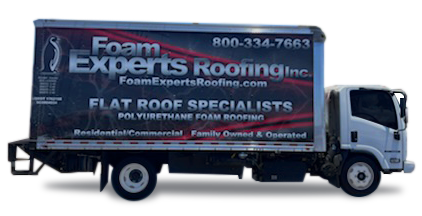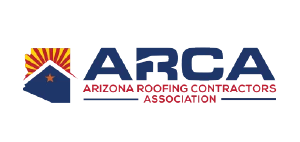Foam roofing is popular in Phoenix for its durable and energy-efficient qualities. Yet, it has its drawbacks.
The intense desert sun and heavy rains in Phoenix can harm foam roofs. They are easy to install and weather-resistant. But, they face unique challenges in this area.
Homeowners and businesses should think carefully about foam roofing. Companies like Foam Experts Roofing help with installation and upkeep.
Key Takeaways
- Foam roofing is durable and energy-efficient.
- Phoenix’s climate can affect foam roof performance.
- Proper installation and maintenance are key.
- Foam Experts Roofing offers expert services.
- It’s important to consider both sides before deciding.
What are the disadvantages of foam roofs in Phoenix’s extreme climate?
The desert climate in Phoenix is tough on foam roofs. It can shorten their life and reduce their effectiveness. Foam roofs face extreme conditions that can damage them in many ways.
Effects of Intense Desert Heat and UV Exposure
Phoenix’s desert heat is intense, with summer temps over 115°F (46°C). This high heat can degrade foam roofs. It can make them lose their insulation and perform less well.
UV rays also harm foam roofs. Direct sunlight can break down the foam. This makes it less effective as an insulator and more likely to crack.
Monsoon Season Challenges and Water Damage Risks
Phoenix’s monsoon season brings heavy rain and strong winds. These conditions are tough on foam roofs. The risk of water damage goes up during these storms.
- Water can seep into the foam through cracks or poor seams.
- Ponding water can occur if the roof’s drainage system is inadequate, further exacerbating the risk of leaks.
Dust Storms and Physical Damage Concerns
Dust storms are common in Phoenix. They can damage foam roofs. The dust’s abrasive nature can wear down the foam’s surface.
Debris from these storms can also puncture or scratch the foam. This can weaken its structure. Regular checks are key to spotting and fixing any damage from dust storms.
Structural and maintenance drawbacks of foam roofing
Foam roofing has some good points but also major downsides. These issues can affect how long your roof lasts and how well it works. This is true, even more so in Phoenix’s tough weather.
Vulnerability to Punctures and Foot Traffic
Foam roofs are easily damaged by punctures and foot traffic. Foot traffic on the roof, whether for maintenance or during repairs, can easily damage the foam surface. This means you need to be very careful when doing anything on the roof to avoid harm.
- Use protective measures like plywood or planks to distribute weight.
- Avoid walking on the roof unless absolutely necessary.
- Mark safe walking paths to minimize damage.
Frequent Recoating Requirements in Arizona
In Arizona, foam roofs need to be recoated often to stay effective. The harsh desert sun and extreme temperatures accelerate the degradation of the foam surface, making regular upkeep a must.
Homeowners should plan to recoat every 5-10 years. This depends on the roof’s condition and what the maker suggests. Regular checks can tell you when it’s time for a recoat.
Difficulty Detecting and Repairing Leaks
Another problem with foam roofs is finding and fixing leaks. Leaks can happen for many reasons, like damage from foot traffic, weathering, or bad installation. Spotting leaks early is key to avoiding water damage.
- Regularly inspect the roof for signs of damage or wear.
- Use infrared scanning or other diagnostic techniques to detect hidden leaks.
- Address any identified issues promptly to prevent further damage.
Cost considerations for Phoenix homeowners
Homeowners in Phoenix face several costs when deciding on a foam roof. The total cost depends on the roof’s size, installation complexity, and materials used.
Initial Installation Expenses Versus Other Roofing Options
Installing a foam roof might cost more than other materials at first. But, it’s worth thinking about long-term savings. Foam roofing is very energy-efficient, which can lower your energy bills.
When looking at initial costs, consider these points:
- The cost of materials for different roofing types
- Labor costs for each roofing type
- The complexity of the installation process
Long-term Maintenance Costs in Desert Conditions
Maintaining a foam roof in Phoenix’s desert is challenging. It needs protection from UV rays and extreme heat. Regular checks and upkeep are key to its longevity.
Regular recoating is a big maintenance cost for foam roofs. How often you need to recoat depends on the initial quality and weather exposure.
Impact on Property Insurance and Home Value
The roofing material can change your insurance rates and home value. Foam roofing, being high-end, can have both positive and negative effects.
A well-kept foam roof can increase your home’s value because of its durability and energy savings. But, the high initial cost and special upkeep might raise insurance rates.
It’s smart to talk to your insurance company about how foam roofing could change your premiums.
Conclusion: Weighing the pros and cons for your Arizona property
Foam roofing has its upsides, like saving energy and lasting long. But, it also has downsides, like being easy to damage and needing frequent touch-ups. This is true, even more so in Phoenix’s harsh weather.
There are big challenges with foam roofs, like being prone to holes and hard to spot leaks. Homeowners need to think hard about these issues. They must compare them to the good points to decide wisely.
Talking to experts like Foam Experts Roofing can help a lot. They can tell you if foam roofing is right for your Arizona home. Knowing the good and bad points helps homeowners pick the best roof for their needs and the desert weather.
It’s best to consult with experts like Foam Experts Roofing for roofing repairs.















